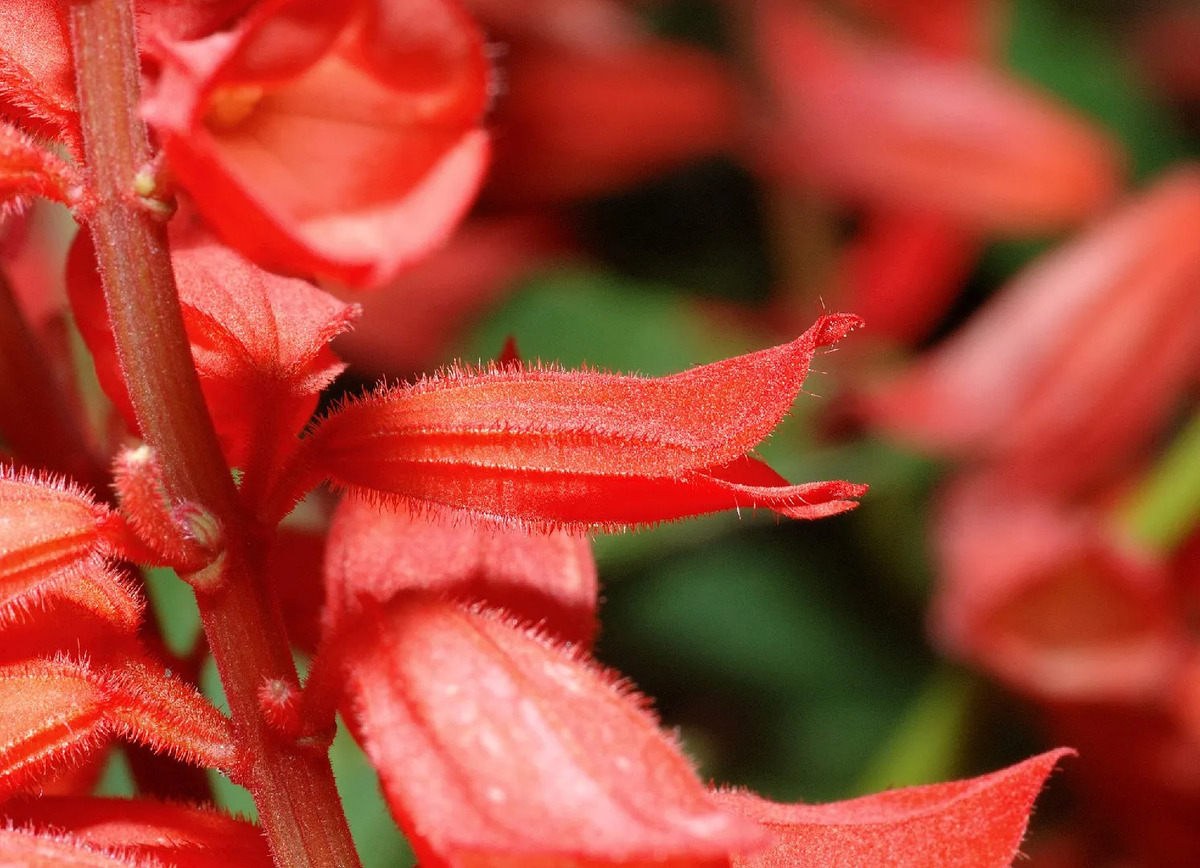
Scarlet Sage, also known by its scientific name Salvia coccinea, is a captivating plant that enchants with its fiery red flowers and unique characteristics. This vibrant perennial is native to the southern United States and Central and South America, and it has become a popular choice among gardeners and plant enthusiasts around the world.
Scarlet Sage is not only visually stunning but also holds historical and cultural significance. From its use in native healing practices to its role as a favorite nectar source for hummingbirds and butterflies, this plant has a rich and intriguing story to tell.
In this article, we will delve into 12 captivating facts about Scarlet Sage, exploring its origins, growth habits, ecological importance, and more. Whether you’re a seasoned gardener or simply have an appreciation for the natural world, join us as we discover the fascinating world of Scarlet Sage.
Key Takeaways:
- Scarlet Sage, also known as Salvia coccinea, is a vibrant flowering plant native to the Americas, attracting hummingbirds, bees, and butterflies with its stunning red flowers.
- With its medicinal properties, drought tolerance, and long bloom time, Scarlet Sage is an easy-to-grow, deer-resistant plant that adds beauty and supports local ecosystems.
Native to the Americas
Scarlet Sage is native to the Americas, specifically North, Central, and South America. It can be found growing in various habitats, including meadows, fields, and even rocky slopes.
Vibrant Red Flowers
One of the most striking features of Scarlet Sage is its vibrant red flowers. These trumpet-shaped blooms not only add a pop of color to any garden but also attract hummingbirds, bees, and butterflies.
Medicinal Properties
Scarlet Sage has been used for centuries for its medicinal properties. It is believed to have anti-inflammatory and analgesic effects, making it useful in traditional herbal remedies for various ailments.
Symbol of Strength and Healing
In Native American cultures, Scarlet Sage is considered a symbol of strength and healing. It is often used in spiritual ceremonies and rituals to promote well-being and balance.
Drought Tolerant
Scarlet Sage is a remarkably resilient plant, as it is highly drought-tolerant once established. This makes it an excellent choice for xeriscaping and low-water gardening.
Easy to Grow
Whether you’re a seasoned gardener or a beginner, Scarlet Sage is relatively easy to grow. It thrives in full sun to partial shade and requires well-draining soil.
Attracts Pollinators
Scarlet Sage’s vibrant flowers act as beacons, attracting a diverse range of pollinators to your garden. By planting Scarlet Sage, you’re not only adding beauty but also supporting local ecosystems.
Long Bloom Time
Unlike some other plants, Scarlet Sage has an extended bloom time. Its flowers can last from late spring to fall, providing constant color and visual interest in your garden.
Perennial in Warmer Climates
In warmer climates, Scarlet Sage behaves as a perennial, meaning it can come back year after year. It is often grown as an annual in colder regions.
Deer Resistant
Scarlet Sage is known for its deer-resistant properties. This is great news for gardeners in areas where deer can be a nuisance, as Scarlet Sage stands a higher chance of surviving untouched.
Culinary and Fragrant Uses
While not as commonly used as other herbs, Scarlet Sage leaves have a subtle minty aroma and can be used sparingly in culinary dishes and drinks for flavor and fragrance.
Versatile in Landscaping
Due to its vibrant red color and attractive foliage, Scarlet Sage can be used in various landscaping applications, including borders, containers, and pollinator gardens.
In conclusion, Scarlet Sage is a captivating plant with a rich history and numerous appealing qualities. From its vibrant red flowers to its resilience in challenging conditions, this plant is sure to impress. Consider adding Scarlet Sage to your garden, and enjoy the beauty and benefits that it brings.
Conclusion
In conclusion, Scarlet Sage is a fascinating and captivating plant that offers numerous benefits and qualities. Its vibrant red flowers, rich history, and medicinal properties make it a popular choice among gardeners and herbal enthusiasts. Whether you’re looking to attract pollinators, add color to your garden, or harness its healing powers, Scarlet Sage is a versatile and stunning plant that will not disappoint. So, go ahead and bring this enchanting plant into your outdoor space and enjoy the beauty and wonder it brings.
FAQs
Q: What is Scarlet Sage?
A: Scarlet Sage, scientifically known as Salvia coccinea, is a flowering plant native to the southern United States and parts of Mexico and Central America. It is characterized by its bright red flowers and aromatic foliage.
Q: How tall does Scarlet Sage grow?
A: Scarlet Sage typically grows to a height of 1 to 3 feet, with its flowers forming on tall spikes that rise above the foliage.
Q: Can Scarlet Sage be grown indoors?
A: While Scarlet Sage is primarily grown outdoors, it can be grown indoors in containers as long as it is provided with ample sunlight and well-drained soil.
Q: Does Scarlet Sage attract pollinators?
A: Yes, Scarlet Sage is highly attractive to hummingbirds, butterflies, and bees, making it an excellent addition to gardens and landscapes that aim to support pollinators.
Q: Is Scarlet Sage used in herbal medicine?
A: Yes, Scarlet Sage has a long history of traditional use in herbal medicine. It is believed to have various therapeutic properties, such as being anti-inflammatory, diuretic, and digestive stimulant.
Q: How do I propagate Scarlet Sage?
A: Scarlet Sage can be propagated by seeds or cuttings. Seeds can be sown in the spring, and cuttings can be taken in late spring or early summer.
Q: Is Scarlet Sage deer-resistant?
A: Scarlet Sage is known to be deer-resistant, making it a suitable choice for gardens that are prone to deer damage.
Q: Can Scarlet Sage tolerate heat and drought?
A: Yes, Scarlet Sage is a heat-tolerant and drought-tolerant plant. Once established, it can withstand hot and dry conditions, making it ideal for gardens in arid regions.
Scarlet Sage's captivating beauty and medicinal properties make it a must-have for any garden. If you're curious about other fascinating plants, explore the world of flowering plants, discover the elegance of ornamental plants like Fatsia Japonica, or uncover the secrets of medicinal plants such as Thyme. Each plant has its own unique story waiting to be told.
Was this page helpful?
Our commitment to delivering trustworthy and engaging content is at the heart of what we do. Each fact on our site is contributed by real users like you, bringing a wealth of diverse insights and information. To ensure the highest standards of accuracy and reliability, our dedicated editors meticulously review each submission. This process guarantees that the facts we share are not only fascinating but also credible. Trust in our commitment to quality and authenticity as you explore and learn with us.


